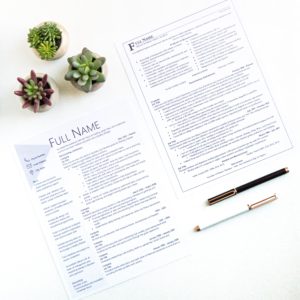

It’s fairly pleasing on the eye, and looks professional: This is described by its creator as ‘the new Times New Roman’. Some other best font for resume I find useful are: 2. I generally use this when writing for my clients, and I’ve seen great results thus far.
Best fonts for resumes professional#
It’s considered one of the most aesthetically pleasing and professional fonts, due to its classic yet polished look. I’ve found it to be the most effective out of the hundreds I’ve experimented with. You must present yourself as professional and well-organised, otherwise your CV might be discarded. Unlike Times New Roman, the modern Garamond gives your resume a more captivating, sophisticated appearance.Īgain, using a professional font is super important in making the first impression. Garamond, a timeless serif typeface like Times New Roman, has been in use for about 500 years.

It fulfills all the criteria for a good resume font: it’s easy to read, appealing, and classy, and it’s not overused. Garamond is a favorite among designers and ad managers. I would expect a serious candidate to present professional-looking profiles my first impression of this CV would be the complete opposite of the previous one! Much better! This profile looks appropriately formal, cleaner, more serious, and more professional. To stand out, we need to consider different fonts.īasically, serif typefaces look like Times New Roman, while the latter looks like Arial. The impression formed isn’t one that is bad, but it won’t be a very memorable one either. The HR officer will have seen them hundreds, if not thousands of times, and they thus aren’t eye catching. There are many great fonts out there – there’s nothing implicitly wrong with the classic Calibri, Times New Roman, Arial font, etc. One important consideration is standing out. No matter your font choice or size, it’s essential to print a test page or view your resume on various devices to ensure it appears correctly across different media.īuild your resume for the Applicant Tracking Systems (ATS) – and steer clear of font and formatting errors consider utilizing one of our resume samples. Studies have also shown serif fonts to be easier to read for long passages.”Ĭonversely, sans serif fonts lack these adornments, boasting a sleek and contemporary appearance. Serif fonts have subtle decorative lines or ‘feet’ at the tips of their letters, showing a classic and traditional feel.Īccording to HR experts, “We like using serif fonts as they convey a more classic and authoritative feel. But in fact, the font you choose speaks volumes about your CV! What’s the difference between Serif and Sans Serif fonts?įont styles can be categorized into two groups: serif and sans serif. As recruiters, one of the first things we notice about a CV is also the font candidates use.

So when it comes to resumes, it’s best to use a CV template that’s simple, clean and easy to read. HR departments today are notorious for their use of Applicant Tracking Systems (ATS) – these automated CV scanners screen a CV for certain keywords, and reject those that don’t meet their criteria.īecause of the way these scanners are designed, fancily-formatted CVs with nice icons and graphics are often filtered because the scanner cannot understand these icons/graphics/pictures, and decide that the CV is ‘blank’ instead. These are important, but there are other considerations. We often get questions about layout, formatting, icons, pictures, etc in resumes. Imagine having your future career decided within 6 seconds! Even in smaller firms, HR is often swamped with applications, and the HR officer often cannot spare more than a few minutes to read through your entire CV. Recruiters form a first impression of a candidate right away, from the first glance at his or her CV. We’ve all heard that first impressions count. What’s the difference between Serif and Sans Serif fonts?.


 0 kommentar(er)
0 kommentar(er)
